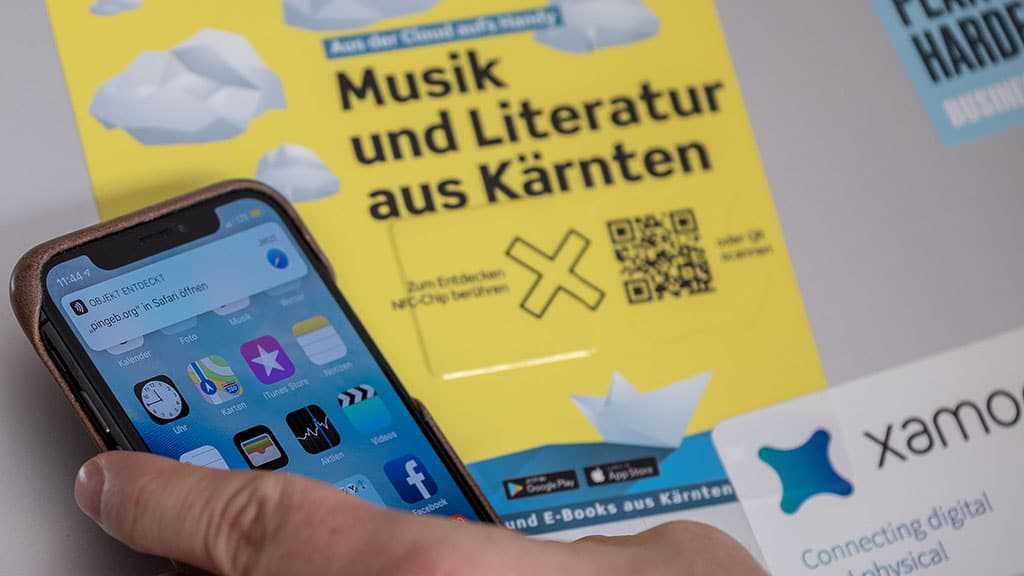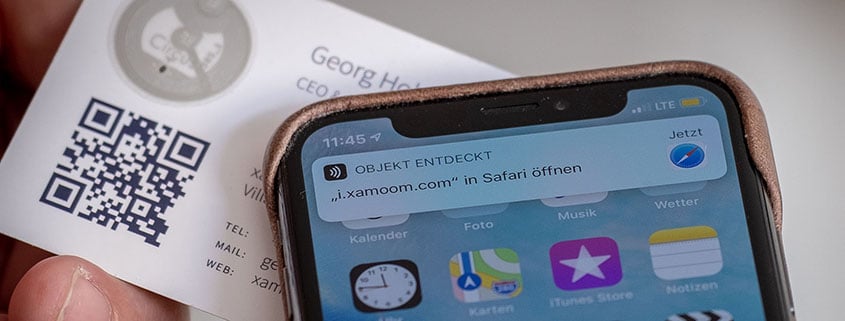NFC is the very reason for xamoom's existence. Bruno and Georg were brainstorming how NFC, Near Field Communication, could provide an easier way to reach users on their phones.
“The cool” was incredible, the ease of use amazing: just tap your phone on an NFC tag and ... bam ... information comes up.
That was in 2012. xamoom now takes care that it is always the right information for the right moment.
Then, only Android could use NFC. If only Apple could add it to their iPhones to bring it with added magic to more users … We at xamoom always knew that NFC would prevail. It was only a question of time that Apple would eventually support it fully.
With the iPhone 7, Apple started to support NFC – though only for its payment service Apple Pay. In 2017 it has been opened up to developers and apps could trigger functionalities using NFC. With this year's three new iPhones (XS, XSmax, and XR) NFC is finally fully supported. What took you so long, Apple?
Older iPhones (7, 8, and X) though, can only use them within apps. Why? Maybe Apple wants us to buy brand new iPhones. This makes communication harder: How do you tell your users that the iPhone does support NFC “but yours still can’t use it”?
This is how it works:
Now you can use NFC just as you would use it on Android. Tap an NFC tag and the URL opens in the Safari browser.
xamoom adds magic to NFC
We have been working with NFC for more than half a decade and added a layer of magic on top of it. While everybody can write a URL from an NFC tag (that task still needs an Android phone), we bring a bunch of features to that URL.
These features are critical to mobile marketing. You do not want to have one single message out for eternity. It needs to change over time and adapt to the user's needs.
So, what is xamoom's fairy dust? It’s ultimate flexibility that helps you delivering always the right message at the right moment.
Change pages anytime from anywhere
You can manage the content on an NFC tag (QR/barcode/beacon/GPS) centrally. Changing the content in a conventional CMS means overwriting the page and losing it entirely. With xamoom, you can change the page at a location with the click of a mouse.
Time-based content
Different times require different content. You shall not invite someone into your store at midnight, but at that moment you could let the potential buyer send an email or fill out a form.
Some sweepstakes need to be open for a precise time span. Once an event is over you could use the deployed infrastructure (NFC-smart posters and beacons) to automatically advertise the next one.
These page changes can be triggered automatically. It works out of the box – in the mobile web and in apps with all access technologies (QR, barcode, NFC, beacons, GPS geofencing).
Identify your most loyal customers
We count the numbers a person has interacted with a QR/NFC/barcode or has been seen at a beacon location. Based on a threshold (e.g. x visits during y hours) the page changes automatically.
With xamoom’s help, breweries can for the first time identify regular visitors to pubs they supply. If a guest meets a criterion (e.g. 5 visits within the last 7 days), he can get a notification and the pub owner can give away a free drink at the brewery’s expense.
Providing decisive rebates
The same technique can be used to trigger a purchase decision.
If a potential buyer is in proximity several times at a certain shelf, he or she is interested in buying. Based on a threshold (e.g. 5 visits within 3 meters of it) you can offer a voucher that finally triggers the purchase.
Random: different pages all the time
One and the same code (cheaper production cost due to mass printing) can deliver different pages – randomly.
Just think of popular sweepstakes with codes at product packages. Now, you can let a random generator decide how many people are winning and (soon) also where winners are more likely to be located.
You can also set your message up that it changes the page according to the number of scans/visits. Visit 1 leads to page A, scan 2 will bring page B up, and so on.
The first scan brings up sales content (the best chain saw ever) and the succeeding scans may lead to the digital manual.

The iPhone scans NFC tags without an app
